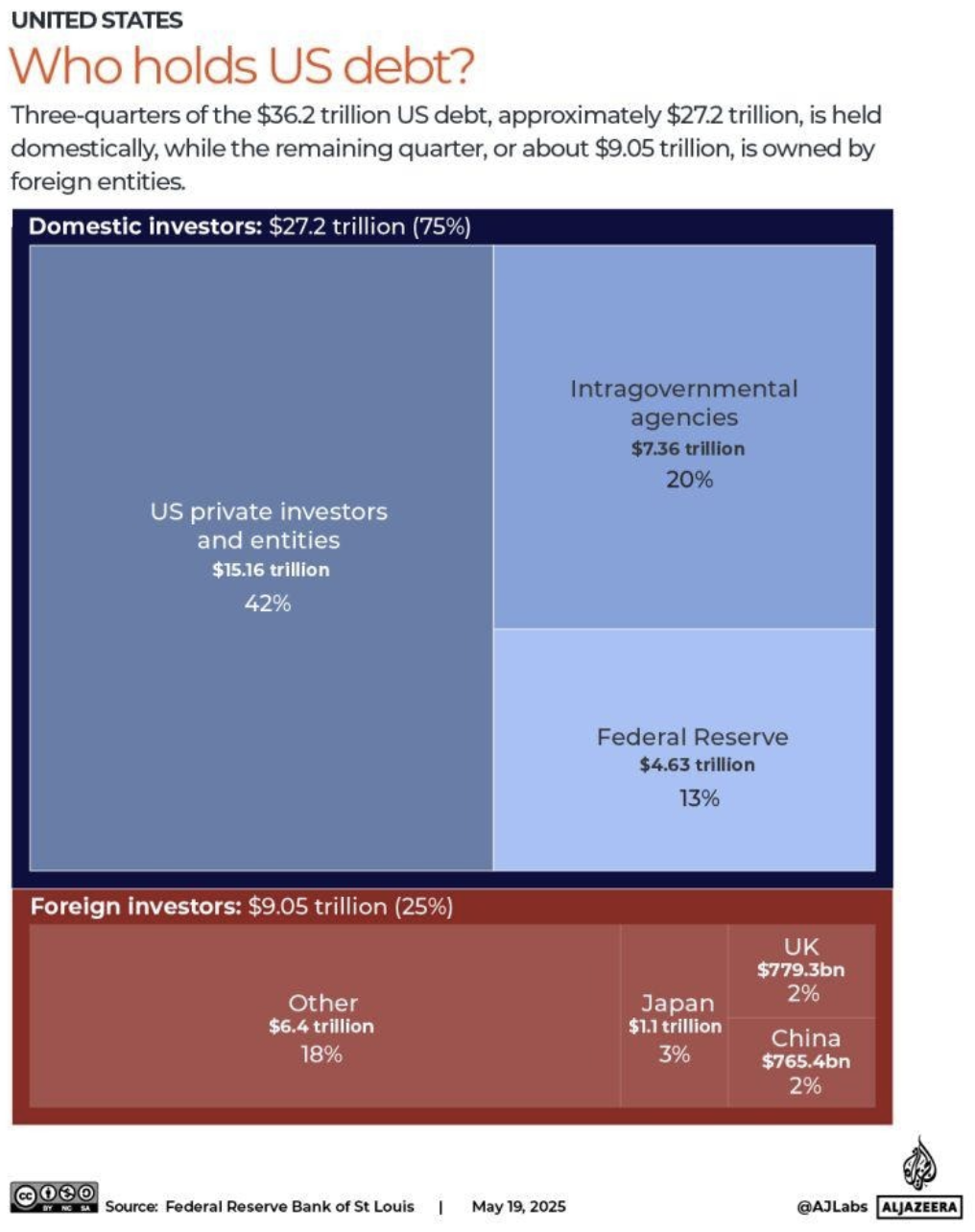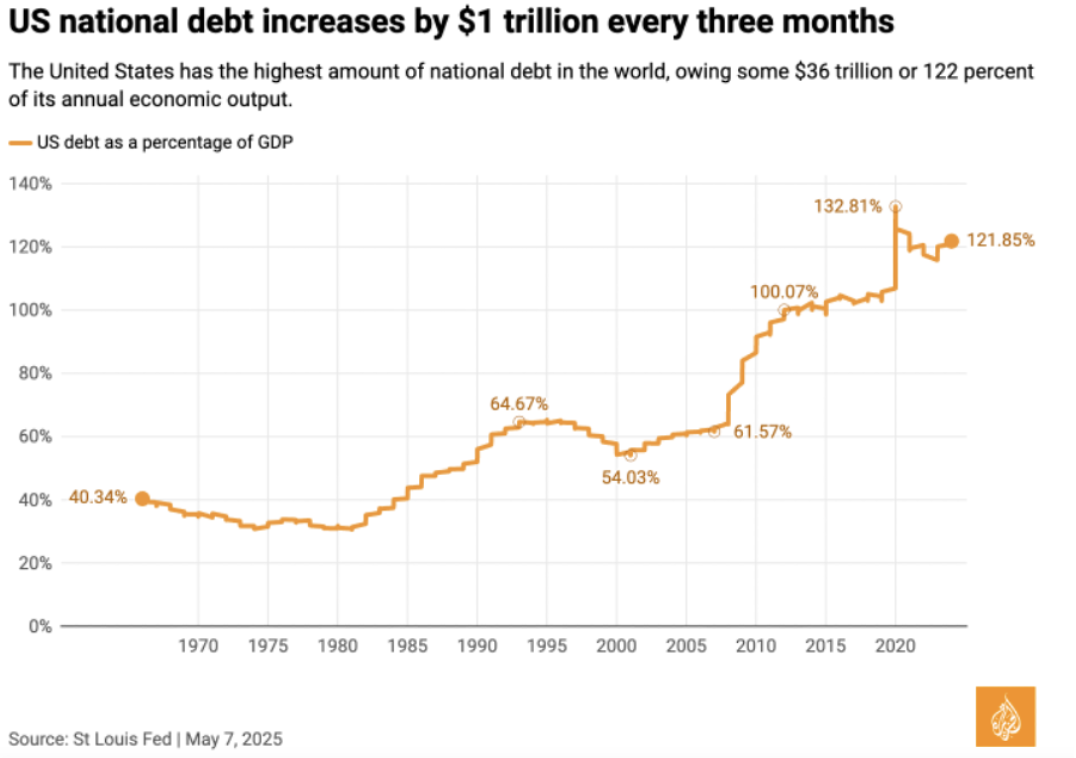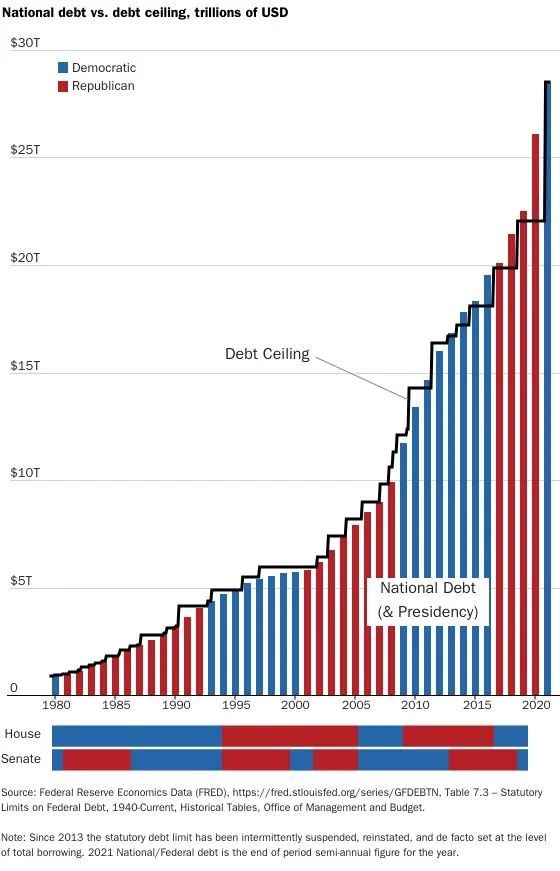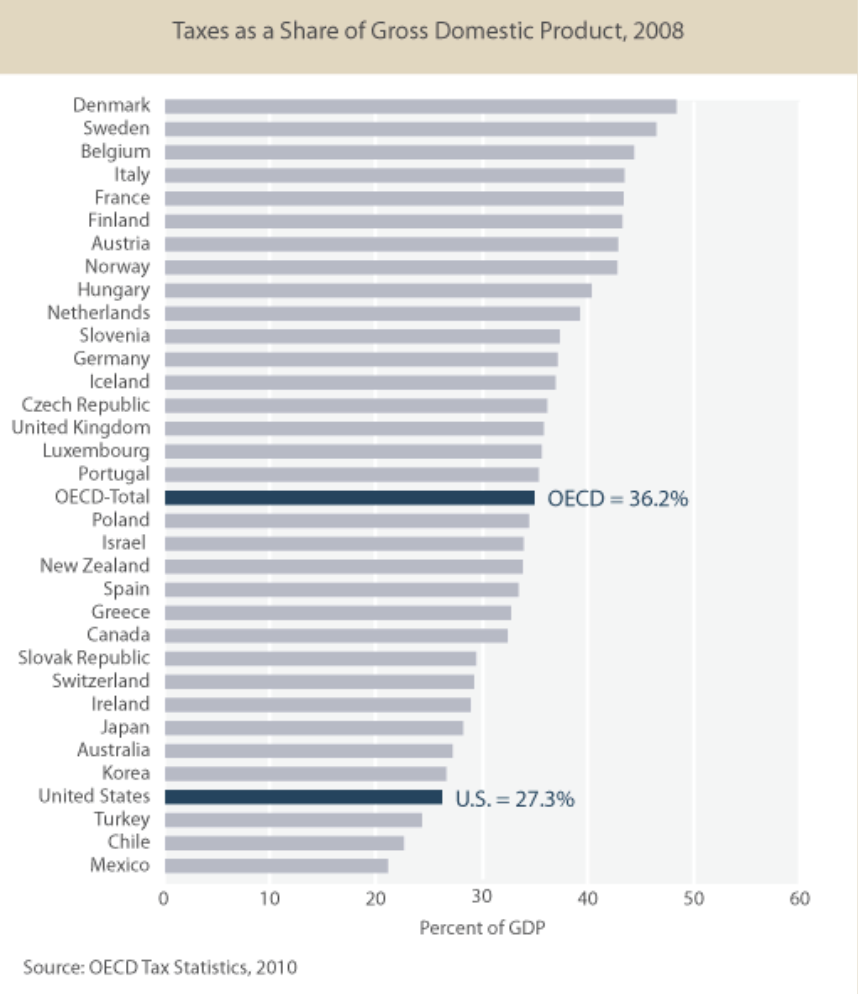Fiscal Policy Discussion Notes
Infographics - Who Owns US Debt?
How Big Is The Debt (Relative To GDP)?
Is there a debt/GDP ratio that’s too high?
And is the answer to the above question contingent upon who holds the debt?
How does the role of the U.S. dollar as global reserve currency affect the answer to the above question?
Does It Matter Who’s In The White House?
What are the political implications of cutting federal expenditures?
Why has neither party cut the debt?
What Does The Federal Government Spend Money On?
Mandatory vs. Discretionary Spending
What expenditures, if any, should be cut to address the debt?
How Do U.S. Federal Government Expenditures Compare To Other Countries?
What expenditures, if any, should be cut to address the debt? Should any be increased?
**Note: This graph includes both federal and local government expenditures on education.
The U.S. Debt Ceiling
The debt ceiling was first implemented in 1917.
It has been increased over 70 times since implementation.
It current stands at $41.1 trillion. It was raised to this level by Trump’s “Big Beautiful Bill Act”.
Should the debt ceiling exist?
Comparative Tax Burden
Does this tax burden need to rise to address the debt?
Has The U.S. Ever Defaulted On Its Debt?
Per this report from the U.S. Congressional Research Service, the federal government has failed to make payments on time in multiple instances during its history.
A notable instance is missing bond payments to creditors in Philadelphia and Boston in 1814 as the War of 1812 was underway. America’s fiscal difficulties at the time prompted Treasury Secretary Alexander Dallas to write in a November 1814 letter that the “treasury was suffering from every kind of embarrassment”.
Contributors
Mark Blyth
Professor of International Economics & Professor of International and Public Affairs, Brown University
Former Member of the Monetary Policy Committee of the Bank of England, Former Global Chief Economist at Citigroup, & former Professor at the London School of Economics,
Former Prime Minister, Finance Minister, & Foreign Minister of Montenegro
Jacob Soll
MacArthur Genius Award Winner & University Professor of Philosophy, History, & Accounting at University of Southern California (USC).
Lecturer of History, Rutgers University
Professor of Economics, Hofstra University
Observers
Francesco Brindisi
New York City Executive Deputy Comptroller for Accountancy, Budget, & Public Finance
Clinical Associate Professor of Cybersecurity, New York University
Professor of History, Columbia University
A summary document will be circulated around policy-making & academic circles.
Questions To Be Put To The Group
1. How concerned, if at all, should we be about the federal debt?
If it is a cause for concern, over what time horizon? Is this urgent?
How serious is the potential for a sovereign debt crisis?
2. What would be the implications of a sovereign debt crisis in the reserve currency/reserve asset (US treasuries) country?
3. How might a growing debt load affect the U.S. dollar’s role as global reserve currency, if at all, & how does the dollar’s role as global reserve currency relate to the debt load?
[We will be organising a separate talk in a few months on the U.S. Dollar standard. Here the focus is primarily on its interaction with the federal debt.]
4. Economists talk about the ‘crowding out’ effect &, less often, the ‘crowding in’ effect. How might the growing U.S. debt load affect private sector investment?
5. What, if anything, should be cut expenditure wise? Is austerity the solution?
6. Can we grow our way out?
7. Can improving public financial management have a significant impact on the debt/deficit? (Professors Jacob Soll & Willem Buiter have co-authored a book on this topic)
8. Any other potential solutions?
9. Over what time horizon should the proposed solutions be enacted?
10. What are the political implications of any proposed solution?





















